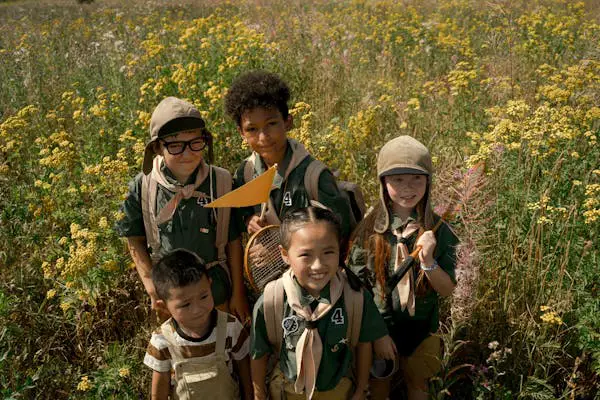
The importance of childhood adventures is undeniable. It’s the bedrock for imagination, where young minds explore and create. Understanding this essence sets the foundation for crafting moments that leave an indelible mark. Setting the stage for an article that delves into the world of creating unforgettable experiences with this adventures for kids guide.
Adventures for Kids Guide:
The Value of Childhood Adventures
The value of childhood adventures extends far beyond mere entertainment. It’s the canvas upon which a child’s creativity and resilience are painted. These experiences are not just about fun; they shape a child’s development and perceptions of the world.
The Essence of Imagination
Imagination is the cornerstone of these adventures. It’s the spark that ignites the journey into the unknown, the key that unlocks limitless possibilities. Nurturing and harnessing this creative force is fundamental in crafting memorable adventures.
Defining Adventures for Kids
Adventures for kids aren’t solely about adrenaline rushes or extreme sports. They encompass a broad spectrum, ranging from exploration in nature to imaginative play indoors. These experiences are tailored to stimulate and engage, keeping safety and age-appropriateness at the forefront.
Importance of Safe and Stimulating Experiences
Creating adventures for children requires a delicate balance between safety and excitement. The experiences need to offer the thrill of exploration while ensuring a secure environment. Safety measures are not restrictive but liberating, allowing children to push their boundaries in a controlled setting.
Encouraging Exploration
Encouraging kids to explore fosters a sense of curiosity and an appetite for discovery. Whether it’s in a controlled outdoor space or through imaginative play at home, these experiences contribute significantly to a child’s cognitive and emotional development.
Designing Adventure-Friendly Spaces
The spaces where adventures unfold play a pivotal role. Designing these areas involves careful consideration of layout, materials, and the incorporation of elements that spark interest and excitement. These spaces need to offer surprises and challenges, stimulating children’s senses and nurturing their inquisitive nature.
Incorporating Elements of Surprise
Surprises in an adventure space evoke excitement and wonder, prompting children to explore further. It can be hidden passages, interactive elements, or sudden twists in the environment that keep the experience fresh and engaging.
Stimulating Curiosity and Wonder
Adventure-friendly spaces should foster an environment that invites children to ask questions, investigate, and seek answers. This stimulation of curiosity and wonder not only makes the adventure enjoyable but also aids in cognitive and emotional development.
Learning Through Adventures
The learning that occurs during these adventures is subtle yet profound. It’s a fusion of educational elements with recreational activities, offering a holistic approach to skill development. It’s not just about teaching; it’s about experiential learning.
Developing Critical Skills
Adventures play a critical role in developing problem-solving, decision-making, and interpersonal skills. These experiences create scenarios where kids learn to assess situations, make choices, and work collaboratively, all while having fun.
Balancing Education and Fun
The best adventures strike a delicate balance between educational content and entertainment. They introduce concepts in a way that feels like play, making learning a natural byproduct of the adventure. This seamless integration fosters a love for learning.
Building Confidence and Resilience
Every adventure contributes to a child’s emotional growth. By facing challenges, taking calculated risks, and overcoming obstacles, children develop a sense of confidence and resilience. These experiences lay the foundation for navigating life’s uncertainties.
Fostering Emotional Intelligence
Adventures provide a platform for children to understand and manage their emotions. They learn to handle excitement, disappointment, and even fear in a controlled environment, which translates to emotional intelligence in real-world scenarios.
The Role of Risk-Taking
Encouraging calculated risk-taking is crucial. It’s not about recklessness but about understanding the consequences of actions and decisions. This fosters a sense of responsibility and helps children develop judgment and adaptability.
Beyond Traditional Notions of Adventure
Venturing beyond the conventional perceptions of adventure opens up a world of innovation and creativity. It’s about redefining adventure to encompass unique and out-of-the-box experiences. These unconventional ideas challenge the norm and introduce children to entirely new realms of exploration.
Innovative and Unique Experiences
Innovation in adventures involves creating experiences that go beyond the expected. It might involve introducing elements of storytelling, role-playing, or even incorporating art and music into the adventure. These unique experiences foster creativity and leave a lasting impression.
Ensuring Safety Without Diluting Adventure
Safety is paramount, but it should not compromise the essence of adventure. Implementing safety measures involves careful planning and a deep understanding of the environment in which the adventure takes place. It’s about creating a safety net without restricting the sense of exploration and thrill.
Risk Management in Adventures
Risk management is not about eliminating risk entirely but about minimizing it in a controlled manner. It’s a careful orchestration of challenges that are age-appropriate, stimulating, and within a manageable scope for children. Understanding and mitigating risks ensure a safe yet thrilling experience.
Empowering Responsible Decision-Making
An essential aspect of adventures is empowering children to make responsible decisions. It’s about giving them the tools to assess risks, make choices, and learn from the consequences, fostering a sense of independence and accountability.

The Role of Parents in Adventure Creation
Parents play a vital role in nurturing and facilitating these adventures. Balancing supervision without stifling a child’s sense of exploration is crucial. It’s about being present as a guide, offering support while allowing the child space for independent discovery.
Have you ever discussed handling risks or evaluating danger with your kids? Shared stories of your childhood mishaps and discussed how to navigate them—encouraged them to explore independently. These conversations enhance your child’s skills and boost your and their confidence in handling diverse situations. You don’t have to wait for emergencies to discuss coping strategies; even young children can learn basic safety measures like memorizing their addresses and seeking help.
If your children crave adventure, engage in conversations about their desired activities, anticipate potential risks, and discuss strategies for handling them. If uncertain, research together or seek advice from experienced individuals. Then, empower them to embark on their adventures, gradually granting them more freedom to explore and learn independently.
Balancing Freedom and Supervision
The delicate balance between granting freedom and providing supervision is a tightrope that parents often walk. Encouraging exploration while ensuring safety requires a fine-tuned approach. It’s about trust and guidance in equal measures.
Nurturing Trust and Independence
Establishing trust between parents and children is fundamental. This trust nurtures a child’s independence and confidence while ensuring they feel supported and secure during their adventures.
Budget-Friendly Adventures
Creating unforgettable adventures doesn’t always require a hefty budget. This section explores how everyday scenarios and minimal resources can be utilized creatively to craft engaging and thrilling experiences.
Affordable Adventure Ideas
Affordable adventures are not about compromising quality but rather leveraging creativity. Simple activities, like scavenger hunts, DIY experiments, or nature walks, can form the foundation of thrilling adventures for kids.
Making the Most of Minimal Resources
Resourcefulness is key in crafting budget-friendly adventures. Repurposing household items, exploring local parks or community spaces, and engaging in low-cost but high-impact activities all contribute to an exciting adventure.
Cultural and Environmental Sensitivity
Understanding and respecting cultural norms and environmental preservation are integral parts of crafting adventures. It’s about instilling values of respect, diversity, and environmental consciousness in children through their experiences.
Respecting Cultural Norms in Adventures
Adventures should be designed in a way that respects and celebrates diverse cultural norms. It’s about creating experiences that expose children to different traditions and perspectives in a respectful and engaging manner.
Promoting Environmental Awareness
Adventures are an excellent platform to instill values of environmental preservation. Encouraging eco-friendly practices and fostering a love for nature in children during their adventures contributes to a future generation of environmentally conscious individuals.
Technology’s Role in Adventures
In a world increasingly intertwined with technology, its role in shaping adventures cannot be overlooked. It’s about leveraging technology to enhance, not overshadow, the experience of adventure for kids.
Balancing Screen Time and Outdoor Experiences
While technology can enhance adventures, it’s crucial to maintain a balance. Integrating technology into adventures should complement outdoor experiences, encouraging a harmonious blend of virtual and real-world exploration.
Innovations in Adventure Planning
Technology brings innovative planning tools and interactive elements to the adventure landscape. From augmented reality to interactive apps, these innovations add layers of engagement and excitement to the adventures crafted for children.

Inclusive Adventures
Creating adventures that cater to diverse needs and inclusivity is essential. It’s about ensuring that every child, regardless of ability or background, can partake in and enjoy the adventure.
Catering to Diverse Needs
Adventures should be tailored to accommodate various abilities, ensuring that all children can participate. It’s about creating an environment that is inclusive and adaptable to different needs.
Embracing Inclusivity and Diversity
Celebrating diversity and inclusivity within adventure planning fosters an environment of understanding, empathy, and acceptance among children. It’s about creating a space where everyone feels seen, valued, and included.
Conclusion:
Unforgettable adventures for kids are not just moments of joy and excitement. They are building blocks for a child’s growth, fostering creativity, resilience, and a love for exploration. Understanding the nuances of crafting these experiences is pivotal to ensure a vibrant and fulfilling childhood. It’s about embracing the essence of adventure while ensuring safety, learning, and inclusivity. Crafting these experiences is an art that shapes not just childhood but also the adults they become.
Crafting unforgettable adventures is an artful blend of safety, excitement, and enrichment. It’s about fostering a love for exploration and learning in a manner that respects diversity and the environment, creating a tapestry of experiences that a child cherishes forever.













